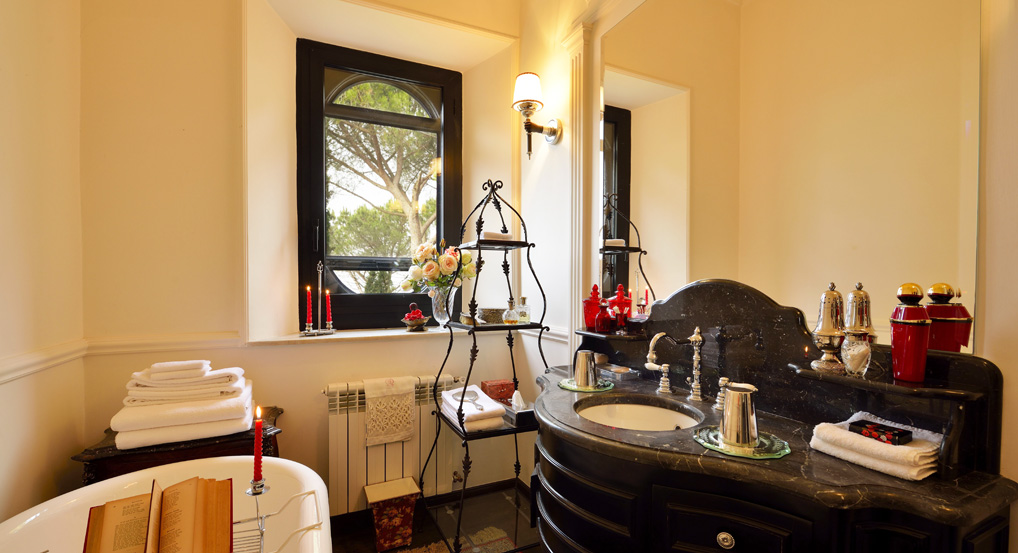• Montepulciano is a graceful Tuscan hill town, best known for its Vino Nobile di Montepulciano, which was being praised by connoisseurs over 200 years ago and can certainly contend with Italy’s best today. The many churches and handsome palazzi, the steep cobbled alleys and vine-trailing stone bastions are essential viewing for anyone venturing south of Siena. On a clear day from the top of the town you have tremendous panoramic views across the countryside, stretching towards Assisi’s Monte Subasio, Monte Amiata, the Val d’Orcia, Pienza, and even the towers of Siena. The splendid Piazza Grande, must be seen: the Duomo with its uncompleted façade and the Town Hall, surrounded by Renaissance palazzos. Be sure you don’t miss the church Tempio di S. Biagio which stands outside the town.
• Montalcino is beautifully situated on a hill inhabited since Etruscan times, swathed in vineyards and olive groves. It is a quiet, affluent, attractive town with pretty buildings and flower-filled squares, and many shops selling the Brunello di Montalcino.
• Pienza, the unfinished “utopian” city, was commissioned by Pope Pius II in 1459. In just three years the cathedral, the papal and bishop’s palaces and the central part of the town were completed, but the extensive project ended abruptly when Pius died only two years after the consacration of the cathedral.
• Cetona – Is situated on the slopes of the mountain of the same name, Cetona retains the characteristic structure of mediaeval settlements with alleys and little roads that wind spirally nel oro on their way to the Fortress. The prehistoric settlement of Belverde 40.000 years old, is worth a visit. The Monte Cetona Civic Prehistory Museum is interesting with its finds from the Palaeolithic to the Bronze Age. In the Parish Church of San Michele arcangelo.
• The Val d’Orcia is a wide valley south of Siena through which the old Via Francigena (the chief route linking Rome with the north) used to lead, passing castles and fortified towns, some of them dating back as far as the eighth century. In San Quirico make sure you see the Horti Leonini, an early Renaissance garden, as well as the western door in the city wall and the Collegiata (main church).
• Florence et Rome can be reached by train in one and a half hours from the nearby station Chiusi.
• Monte Oliveto Maggiore. This abbey was founded by three Sienese noblemen who left the city to live a life dedicated to prayer, religion, etc. and who founded the Olivetan order – an off-shoot of the Benedictines. The most important thing to see at this still active and working Monastery is the cycle of frescoes that decorate the monumental cloister. They describe the live of Saint Benedict and were painted by Signorelli and Sodoma. There are also some beautiful marquetry stalls in the church itself. It is a very magical and serene place set in the midst of exceptionally beautiful countryside.
It is home to a dozen monks who specialize in restoring old books, and make wine, honey and olive oil.
• Sant’Anna in Camprena is a rambling monastery on the road between Pienza and San Quirico d’Orcia. A very romantic setting which served as location for the film The English Patient. In the refectory there is a fresco by the renaissance painter Giovanni Antonio Bazzi, known as Il Sodoma.
• Sant’Antimo is surely one of the loveliest Romanesque buildings in all of Italy. It is hard to imagine a more sympathetic combination of architectural grace and natural setting. Originally founded by Charlemagne in 800, the abbey was once home to a prominent Benedictine community. Creamy stone bricks, luminous Volterran alabaster, playful carvings and frescoes of animals give it a peculiarly sunny air. A group of French Cistercian monks now runs the abbey, celebrating Mass with Gregorian chants several times a day.
• Tuscany is famous for its hot springs, belonging to a geothermical system that more or less encircles Monte Amiata, the most spectacular being Saturnia in the south west of the region. Close to La Foce is Bagno Vignoni which has been popular since Etruscan times. St Catherine of Siena is said to have appreciated its therapeutic qualities, as is Lorenzo the Magnificent, whose family built the splendid arcaded pool – a kind of flooded, bubbling piazza, famously used by Tarkovsky for some of the more surreal passages of his film Nostalgia. Bagni San Filippo may go into the books as the world’s smallest thermal spa – a telephone booth, a few old houses, an outdoor spring in the middle of the woods with glistening limestone formations, and one small hotel with a public pool.
• Chianciano – Is one of the most important spa centres in Italy. And its fame in the field of spa cures has continued without interruption for more than 2000 years. This is borne out by the many Etruscan and Roman archaeological finds that are continually being discovered throughout the territory and are collected in the recently opened Civic Archaeological Museum.
• Chiusi – Highly important in the Etruscan period, Chiusi experienced its greatest splendour under the legendary king Porsenna. Very significant finds from archaeological digs that are still successfully under way may be seen at the National Etruscan Archaeological Museum. To see the cathedral (Duomo) which already existed in the 12th century and was transformed in 1585, and next to it the Cathedral Museum, established in the 1930’s, which houses important objects including precious illuminated missals.
















































